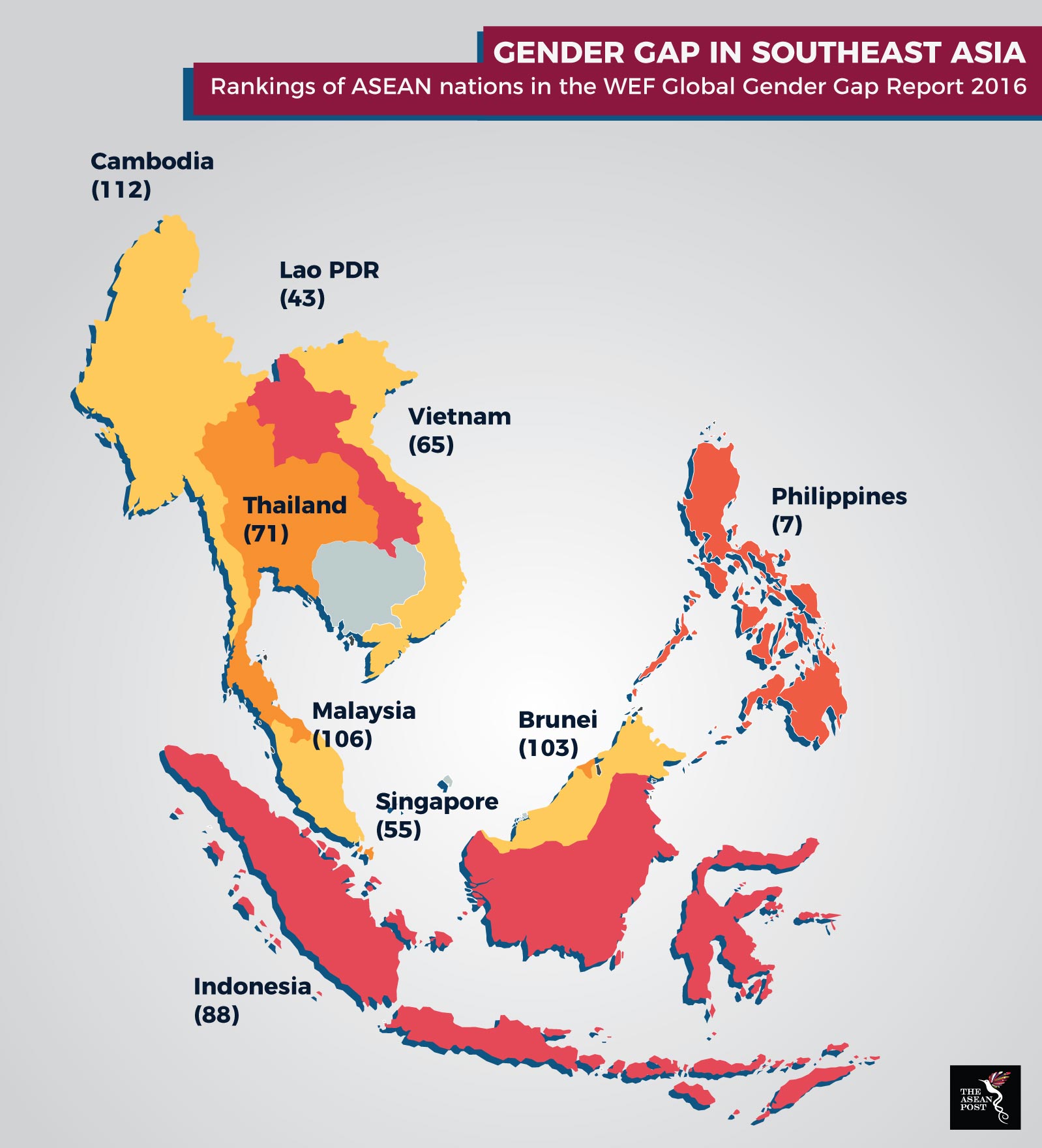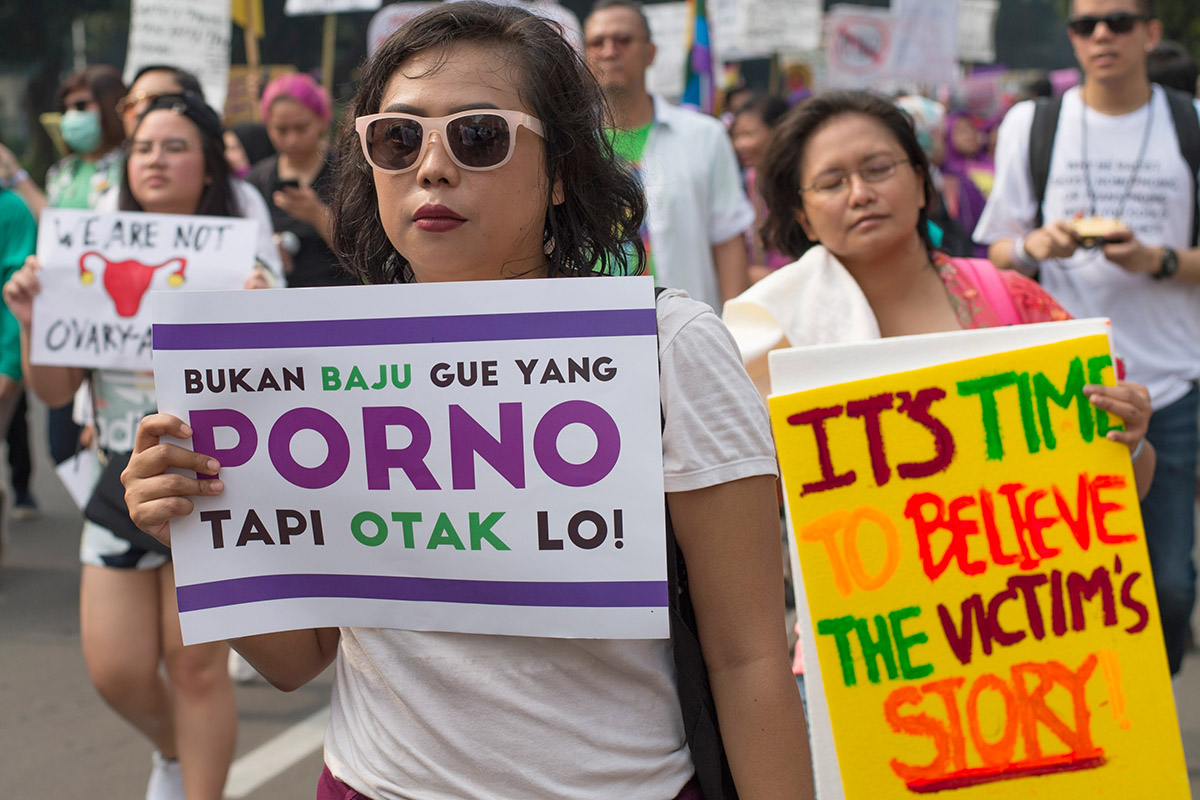Stories of brave women in the region are plentiful. In Vietnam, women were instrumental in liberating the country from American occupation. When the Philippines was colonized by Spain, women like Gabriela Silang played a significant role in fighting colonialism. In Malaysia, women like Shamsiah Fakeh led the women’s wing of the Malay Nationalist Party in fighting for independence from the British.
Just like anywhere else in the world, women here have always played a strong role in developing the region. Without the aforementioned women, the Southeast Asia we know today could be completely different. These women also show that the concept of women asserting their position in society isn’t merely a Western concept but a universal one. However, despite the prominent role women have played in making Southeast Asia a better place, the region still has a long way to go in terms of appreciating women, valuing their contributions and treating them equally.
While there have been plenty of women holding positions of power in Southeast Asia such as Arroyo in Philippines, Megawati in Indonesia and most recently, Halimah Yaacob in Singapore, female representation in the governments of many Southeast Asian countries is still lacking. At the moment, only the Philippines has more than 10% women’s representation in politics. Furthermore, some feminists have spoken out against celebrating Halimah Yaacob’s position as she was appointed rather than elected and that the presidential seat in Singapore is largely ceremonial.
Despite the significant growth in its economy over the past decade, Southeast Asian women are still not getting their fair share of the acquired wealth. In an Asian Development Bank study in 2015, it was found that on average, women earned 30% lower than their male counterparts. In Malaysia, the average gender pay gap is 21% despite the increasing number of women in the workforce. In Vietnam, despite the fact that women make up an overwhelming 72% of the workforce and are contributing more to the nation’s wealth, men are still being paid 13% more than women there.
In many cases, women still find trouble finding jobs. According to the Asian Development Bank, “…on average women are 70 percent less likely than men to be in the labour force. This gap persists despite economic growth, decreasing fertility rates, and increasing education.”

Source: World Economic Forum Global Gender Gap Report 2016
Tan Heang-Lee from Malaysian women’s rights NGO Women’s Rights Association (WAO) told the ASEAN Post in 2017 that “…women, especially mothers, experience discrimination at work. According to a 2016 survey by WAO, about 40 percent of pregnant women were discriminated by employers. This includes making their positions redundant, denying them promotions, placing them on prolonged probation, demoting them, and terminating their jobs.”
According to the World Economic Forum’s Global Gender Gap Report 2016, the Philippines remains the only country in Southeast Asia to be in the top 10. The only other country close to the Philippines in narrowing the gender gap is Lao PDR. The nation has made significant progress in narrowing the wage gap, labour participation and representation in politics.
The report also highlighted that Vietnam, Thailand and Indonesia have made progress in narrowing the gender gap but still have plenty to do if they want to catch up with the Philippines and Lao PDR. Meanwhile, the report also points out that Cambodia received a lower score this year as women’s labour participation and estimated earned income numbers declined.
It doesn’t just stop in the job market. Women constantly face the threat of violence in the form of sexual harassment, domestic violence and other types of abuse. Adequate laws in protecting women are still not in place in many countries in the region. For example, in Malaysia, marital rape is still not considered a crime. Meanwhile, according to the United Nations (UN), Southeast Asia has one of the highest rates of violence against women.
If Southeast Asia wants to be a developed region, then it needs to recognize the contributions that women make to its economy too. Women in the region deserve to be fairly compensated for their labour and be given the same opportunities men get in the job market. It doesn’t just stop there, strong protections against violence and harassment needs to be set up too.
Last Saturday, women in Jakarta marched and demanded their voices be heard. Women in Malaysia will be doing the same this weekend. To achieve gender equality in the region, governments need to listen to their concerns and have enough political will to implement true reforms for a more equal Southeast Asia.
Recommended stories:
